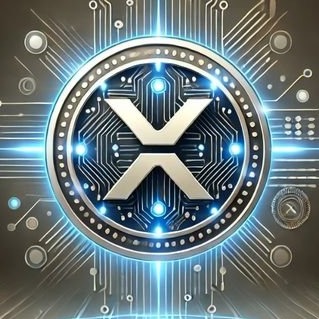Bitget:日次取引量の世界ランキングでトップ4にランクイン!
BTCマーケットシェア62.85%
Bitgetの新規上場 : Pi Network
BTC/USDT$83387.62 (+5.40%)恐怖・強欲指数43(恐怖)
アルトコインシーズン指数:0(ビットコインシーズン)
プレマーケットに上場した通貨PAWS,WCTビットコイン現物ETFの純流入総額(-$149.5M(1日)、-$653.5M(7日))。6,200 USDT相当の新規ユーザー向けウェルカムギフトパッケージ。今すぐ獲得する
Bitgetアプリでいつでもどこでも取引しましょう今すぐダウンロードする
Bitget:日次取引量の世界ランキングでトップ4にランクイン!
BTCマーケットシェア62.85%
Bitgetの新規上場 : Pi Network
BTC/USDT$83387.62 (+5.40%)恐怖・強欲指数43(恐怖)
アルトコインシーズン指数:0(ビットコインシーズン)
プレマーケットに上場した通貨PAWS,WCTビットコイン現物ETFの純流入総額(-$149.5M(1日)、-$653.5M(7日))。6,200 USDT相当の新規ユーザー向けウェルカムギフトパッケージ。今すぐ獲得する
Bitgetアプリでいつでもどこでも取引しましょう今すぐダウンロードする
Bitget:日次取引量の世界ランキングでトップ4にランクイン!
BTCマーケットシェア62.85%
Bitgetの新規上場 : Pi Network
BTC/USDT$83387.62 (+5.40%)恐怖・強欲指数43(恐怖)
アルトコインシーズン指数:0(ビットコインシーズン)
プレマーケットに上場した通貨PAWS,WCTビットコイン現物ETFの純流入総額(-$149.5M(1日)、-$653.5M(7日))。6,200 USDT相当の新規ユーザー向けウェルカムギフトパッケージ。今すぐ獲得する
Bitgetアプリでいつでもどこでも取引しましょう今すぐダウンロードする



APENFTの価格NFT
上場済み
決済通貨:
JPY
¥0.{4}6020+1.49%1D
NFTからJPYへの交換
NFT
JPY
1 NFT = 0.00 JPY
Bitgetは、主要取引プラットフォームの中で最も低い取引手数料を提供しています。VIPレベルが高ければ高いほど、より有利なレートが適用されます。
価格
TradingView
時価総額
APENFTの価格チャート(NFT/JPY)
最終更新:2025-04-12 01:00:32(UTC+0)
時価総額:¥60,196,606,416.28
完全希薄化の時価総額:¥60,196,606,416.28
24時間取引量:¥3,901,186,699.9
24時間取引量 / 時価総額:6.48%
24時間高値:¥0.{4}6029
24時間安値:¥0.{4}5855
過去最高値:¥0.001096
過去最安値:¥0.{4}4145
循環供給量:999,990,000,000,000 NFT
総供給量:
999,990,000,000,000NFT
流通率:99.00%
最大供給量:
--NFT
BTCでの価格:0.{11}5036 BTC
ETHでの価格:0.{9}2687 ETH
コントラクト:
0x20ee...71aecca(BNB Smart Chain (BEP20))
もっと
APENFTに投票しましょう!
注:この情報はあくまでも参考情報です。
APENFT (NFT)について
加密货币APENFT是一个具有历史意义的项目,它在数字艺术领域引发了革命性的变革。APENFT通过利用区块链技术和智能合约,提供了一种去中心化的平台,使艺术家能够将他们的作品永久记录下来,并保证其唯一性和不可篡改性。
APENFT的关键特点之一是其艺术品唯一性验证。通过将作品的数据存储在区块链上,每件艺术品都可以得到唯一的标识,使其易于追溯和验证。这种唯一性不仅为艺术品提供了保护,还为艺术家和收藏家提供了可靠的鉴定和交易机制。
此外,APENFT还重视社区参与和治理。通过持有APENFT代币,持有者可以参与平台的决策过程,并享受权益分红。这种社区驱动的模式鼓励用户积极参与项目的发展,增强了平台的去中心化特性和可持续性。
APENFT的发展也对数字艺术市场产生了深远的影响。传统艺术市场常常受到限制和中介机构的制约,而APENFT的出现为艺术家和收藏家提供了更多的自由和机会。此外,APENFT还推动了艺术品的数字化,为艺术家开辟了新的销售渠道和收入来源。
虽然加密货币APENFT在数字艺术领域中仍处于发展初期,但它的潜力和影响力不可忽视。随着越来越多的艺术家和收藏家认识到区块链和加密货币对行业的意义,APENFT将继续成为数字艺术市场的重要角色,引领行业迈向更加开放和创新的未来。
值得注意的是,投资加密货币存在风险,读者应该在投资前进行充分的研究和了解,审慎决策。提醒读者要保持谨慎和理性的态度,不受不实信息的影响,做出明智的投资选择。
APENFTのAI分析レポート
本日の暗号資産市場のハイライトレポートを見る
本日のAPENFT価格パフォーマンスの概要レポートを見る
APENFTプロジェクト分析レポートレポートを見る
本日のAPENFT価格(JPY)
現在、APENFTの価格は¥0.{4}6020 JPYで時価総額は¥60.20Bです。APENFTの価格は過去24時間で1.49%上昇し、24時間の取引量は¥3.90Bです。NFT/JPY(APENFTからJPY)の交換レートはリアルタイムで更新されます。
APENFTの価格履歴(JPY)
APENFTの価格は、この1年で-22.49%を記録しました。直近1年間のJPY建てNFTの最高値は¥0.0001257で、直近1年間のJPY建てNFTの最安値は¥0.{4}5190でした。
時間価格変動率(%) 最低価格
最低価格 最高価格
最高価格 
 最低価格
最低価格 最高価格
最高価格 
24h+1.49%¥0.{4}5855¥0.{4}6029
7d-1.71%¥0.{4}5691¥0.{4}6218
30d-3.34%¥0.{4}5691¥0.{4}6641
90d-17.21%¥0.{4}5691¥0.{4}7666
1y-22.49%¥0.{4}5190¥0.0001257
すべての期間+482.76%¥0.{4}4145(2023-06-10, 1年前 )¥0.001096(2021-09-05, 3年前 )
APENFTの最高価格はいくらですか?
APENFTの過去最高値(ATH)は¥0.001096 JPYで、2021-09-05に記録されました。APENFTのATHと比較すると、APENFTの現在価格は94.51%下落しています。
APENFTの最安価格はいくらですか?
APENFTの過去最安値(ATL)は¥0.{4}4145 JPYで、2023-06-10に記録されました。APENFTのATLと比較すると、APENFTの現在価格は45.24%上昇しています。
APENFTの価格予測
NFTの買い時はいつですか? 今は買うべきですか?それとも売るべきですか?
NFTを買うか売るかを決めるときは、まず自分の取引戦略を考える必要があります。長期トレーダーと短期トレーダーの取引活動も異なります。BitgetNFTテクニカル分析は取引の参考になります。
NFT4時間ごとのテクニカル分析によると取引シグナルは購入です。
NFT1日ごとのテクニカル分析によると取引シグナルは売却です。
NFT1週間ごとのテクニカル分析によると取引シグナルは売れ行き好調です。
2026年のNFTの価格はどうなる?
NFTの過去の価格パフォーマンス予測モデルによると、NFTの価格は2026年に¥0.{4}5500に達すると予測されます。
2031年のNFTの価格はどうなる?
2031年には、NFTの価格は+27.00%変動する見込みです。 2031年末には、NFTの価格は¥0.0001088に達し、累積ROIは+82.69%になると予測されます。
よくあるご質問
APENFTの価格に影響を与える要因は何ですか?
APENFTの価格は、全体的な市場のセンチメント、NFTセクターの発展、パートナーシップやコラボレーション、プロジェクトの進捗、投資家の関心、そしてより広範な経済指標などのさまざまな要因によって影響を受けます。
APENFTの価格はどのくらいの頻度で変化しますか?
APENFTの価格は頻繁に変動する可能性があり、Market Conditionsや Bitget のような取引所での取引量に応じて、1日に何度も変動することがあります。
APENFTの現在の価格予測は何ですか?
APENFTの価格予測はアナリストの間で大きく異なり、テクニカル分析、市場のトレンド、最近のニュースに影響されます。結論を出す前に、自分自身で調査を行い、複数の情報源に相談することが重要です。
APENFTはどのように購入できますか?
APENFTは複数の暗号通貨取引所で購入できます。選択肢の1つはBitget取引所で、利用可能な取引ペアに応じて、他の暗号通貨や法定通貨と取引できます。
APENFTの価格はなぜこれほど変動しやすいのか?
APENFTの価格は、暗号通貨市場の投機的な性質、プロジェクトの初期段階、市場のセンチメント、Bitgetなどの取引所での取引量の変動によって変動する可能性があります。
APENFTは新しい史上最高価格に達することができるでしょうか?
プロジェクトに好意的な進展があり、NFTの採用が増え、市場の条件が良好であれば、APENFTが新しい史上最高に達する可能性があります。ただし、そのような動きを確実に予測することは難しいです。
APENFTは価格パフォーマンスにおいて他のNFT関連コインとどのように比較されますか?
価格パフォーマンスに関して、APENFTは時価総額、取引量、価格ヒストリーなどの指標に基づいて他のNFT関連コインと比較できます。それぞれのコインのパフォーマンスは、その特定のユースケースと市場の認識に影響されます。
APENFTの歴史的価格トレンドはどのようになっていますか?
APENFTの歴史的価格トレンドは、市場の需要、ニュースの発表、NFTに対する一般的な関心に基づいて変動しています。明確な理解を得るためには、Bitgetのようなプラットフォームで価格チャートや履歴データを確認することが重要です。
APENFT の価格変動をどのように追跡できますか?
さまざまな暗号通貨トラッキングウェブサイトやツールを使用することで、または Bitget 取引所で価格チャートや取引量を監視することで APENFT の価格変動を追跡できます。
APENFTへの投資に関連するリスクは何ですか?
APENFTへの投資には、高いボラティリティ、市場操作、規制の変更、技術的課題など、暗号通貨特有のリスクが伴います。投資する前に、十分な調査を行い、自分のリスク許容度を考慮することが重要です。
ApeNFT(NFT)は優良投資先ですか
APENFT 仮想通貨は、ブロックチェーン業界において着実にその地位を固めました。特にメインストリームと仮想通貨の両方の領域で優れたパートナーを獲得しています。APENFT が有望な投資先として頭角を現した理由は以下の通りです。
有力な後援者とパートナーシップ:
仮想通貨の実現性を評価するとき、その提携先と後援者を検証することは大変重要です。APENFT のメインストリームおよび仮想通貨セクターでの輝かしい協力関係は、投資の世界で好意的に受け止められています。
APENFT エコシステムの成長:
NFT のアーティストやトレーダーの参加も増加していることから、APENFT マーケットプレイスは成長を約束されています。多様なコレクションのローンチにより、ユーザーの波が押し寄せ、APENFT トークンの価格が上昇する可能性があります。
NFT セクターへの関心の高まり:
NFT に対する企業と消費者の関心が高まれば、APENFT の価値はそのマーケットキャップとともに恩恵を受けるでしょう。アーティストや定評ある美術機関など、アートシーンの著名人との戦略的提携は、APENFT の知名度を高め、価格指標を上昇させると思われます。
仮想通貨市場の強気センチメント:
デジタル資産への熱気が再び高まれば、APENFT トークンの価格も上昇する可能性があります。幅広い仮想通貨の世界に対する投資家の信頼が高まれば、仮想通貨への資金流入が加速し、NFT 仮想通貨が将来的な投資対象として脚光を浴びると考えられます。
NFT トークンで何ができるのですか
APENFT の NFT トークンの主な機能と用途:
ガバナンスと利益:NFT トークンの保有者は APENFT マーケットプレイスで投票できます。また、プラットフォームの利益を要求できるほか、NFT エアドロップの恩恵を受けられます。
所有権の証明:NFT トークンは APENFT で販売される資産の所有権を証明します。
インセンティブ報酬:BTC、ETH、TRX などを使用して APENFT エコシステムに参加すると、参加者は NFT ガバナンス報酬を得ることができます。
DeFi 統合:APENFT はイーサリアムおよび TRON 上の DeFi エコシステムを NFT 仮想通貨で強化する計画です。HECO および BSC とのコラボレーションにより、DeFi エアドロップと NFT 仮想通貨マイニングがさらに進むでしょう。
投資および取引:APENFT のネイティブトークンを投資対象としてご検討ください。取引の前に、APENFT の現在価格、NFT 時価総額、取引量、最新の仮想通貨インサイトを判断してください。
NFT トークンの使い方を教えてください。
APENFT マーケットプレイスの使い方は簡単です。
まず、ご自分の TronLink Wallet をリンクします。初めての方は、まず TronLink wallet をセットアップしてください。
Bitget などのプラットフォームでトロン(TRX)を取得し、TronLink Wallet をトップアップします。次にこれらのトークンを取引所のアカウントからウォレットに送金します。
APENFT マーケットプレイスのメインページにある [Explore] タブを開きます。
[Collection]、[Status]、[Price]、[Category] などのフィルターを使って NFT をソートしてください。
興味のある NFT が見つかったら、[Make Offer]をクリックして入札します。
TronLink Wallet からアクションを確認してください。
ApeNFT の価格予測はどのようになっていますか
特に、このトークンの流通量が膨大であることを考えると、APENFT の価格を正確に予測することは本質的に難しいと言えます。価格0.01ドルを達成するというこのトークンの目標は、流通量の多さゆえにかなり意欲的です。
APENFT の NFT 総供給量は 999 兆 9,900 億という驚異的な数字です。わずか0.01ドルのプライスポイントでも、マーケットキャップは 2 兆ドルという天文学的な数字に跳ね上がり、APENFT エコシステムの高額評価が実現する可能性があります。
APENFT Foundation が NFT トークンのバーンレートを大幅に引き上げ、流通量を数兆から数百万に減らした場合、NFT トークン価格は 0.01 ドルの節目に近づくかもしれません。上記の成果は、積極的なトークン・バーン戦略にかかっています。
APENFT(NFT)エアドロップの対象者は誰ですか
2021年5月、APENFT Foundation は TRON メインネットの TRC-20 BTC、TRC20-ETH、TRC20-TUSD、TRX、BTT、JST 保有者を対象とした APENFT(NFT)仮想通貨エアドロップを発表しました。デベロッパーは NFT トークンの総供給量の 5% を APENFT(NFT)エアドロップ・プログラムのために取り置き、次のようにトークンを割り当てました。
⧫ 2021年6月から、初月に総供給量の1%をエアドロップ。
⧫ 残りの4%を今後2年間、毎月エアドロップ。
2021年10月、APENFT はエアドロップ・プログラムの更新を発表しました。WIN トークンの保有者は NFT のエアドロップを受け取る資格があります。このプランでは、エアドロップの対象が TRC20-BTC、TRC20-ETH、TRC20-TUSDトークンの保有者から切り替えられました。この期間に NFT トークンを保有していた人はすでにエアドロップを受け取っています。Bitget 取引所にトークンを送るだけで、別の仮想通貨と取引または交換できます。
APENFT の歴史を教えてください
APENFT は、2021 年 3 月にシンガポールで設立されました。陣頭指揮を執ったのは、浙江大学、コロンビア大学ビジネススクールの卒業生 Steve Z. Liu 氏です。金融業界で20年以上の経験を積んだ Liu 氏が、APENFTのビジョンの舵取りをしました。
2021 年 5 月、APENFT は TRC20-BTC と TRC20-ETH を含む複数の TRON メインネット・トークン保有者を対象に NFT トークンのエアドロップを実施し、マーケットプレイスでのエンゲージメントを高めました。
2021 年 10 月、APENFT は TRON ブロックチェーン上の NFT エコシステムを強化するために Kraftly と提携するとともに、優れた NFT クリエイターのための Art Dream Fund を立ち上げました。
2022 年 3 月、同社はGenesis NFT Badge を導入しました。4 月に発表されたこのエクスクルーシブ・コレクションでは、10,000 枚の NFT が提供され、保有者には、APENFT マーケットプレイスでのエアドロップや早期販売へのアクセスなどの特典が与えられました。
APENFTの現在の価格はいくらですか?
APENFTのライブ価格は¥0(NFT/JPY)で、現在の時価総額は¥60,196,606,416.28 JPYです。APENFTの価値は、暗号資産市場の24時間365日休みない動きにより、頻繁に変動します。APENFTのリアルタイムでの現在価格とその履歴データは、Bitgetで閲覧可能です。
APENFTの24時間取引量は?
過去24時間で、APENFTの取引量は¥3.90Bです。
APENFTの過去最高値はいくらですか?
APENFT の過去最高値は¥0.001096です。この過去最高値は、APENFTがローンチされて以来の最高値です。
BitgetでAPENFTを購入できますか?
はい、APENFTは現在、Bitgetの取引所で利用できます。より詳細な手順については、お役立ちapenftの購入方法 ガイドをご覧ください。
APENFTに投資して安定した収入を得ることはできますか?
もちろん、Bitgetは戦略的取引プラットフォームを提供し、インテリジェントな取引Botで取引を自動化し、利益を得ることができます。
APENFTを最も安く購入できるのはどこですか?
戦略的取引プラットフォームがBitget取引所でご利用いただけるようになりました。Bitgetは、トレーダーが確実に利益を得られるよう、業界トップクラスの取引手数料と流動性を提供しています。
APENFTに関するニュース
もっと見る
APENFT市場
APENFT保有量
APENFTの保有量分布表
APENFTの集中度別保有量
大口
投資家
リテール
APENFTの保有時間別アドレス
長期保有者
クルーザー
トレーダー
coinInfo.name(12)のリアル価格チャート

APENFTのグローバル価格
現在、APENFTは他の通貨の価値でいくらですか?最終更新:2025-04-12 01:00:32(UTC+0)
NFT から MXN
Mexican Peso
$0NFT から GTQGuatemalan Quetzal
Q0NFT から CLPChilean Peso
$0NFT から HNLHonduran Lempira
L0NFT から UGXUgandan Shilling
Sh0NFT から ZARSouth African Rand
R0NFT から TNDTunisian Dinar
د.ت0NFT から IQDIraqi Dinar
ع.د0NFT から TWDNew Taiwan Dollar
NT$0NFT から RSDSerbian Dinar
дин.0NFT から DOPDominican Peso
$0NFT から MYRMalaysian Ringgit
RM0NFT から GELGeorgian Lari
₾0NFT から UYUUruguayan Peso
$0NFT から MADMoroccan Dirham
د.م.0NFT から AZNAzerbaijani Manat
₼0NFT から OMROmani Rial
ر.ع.0NFT から KESKenyan Shilling
Sh0NFT から SEKSwedish Krona
kr0NFT から UAHUkrainian Hryvnia
₴0- 1
- 2
- 3
- 4
- 5
APENFT(NFT)の購入方法

無料でBitgetアカウントを作成します
Eメールアドレス/携帯電話番号でBitgetに登録し、アカウントを保護するために強力なパスワードを作成します。

アカウントを認証する
個人情報を入力し、有効な写真付き身分証明書をアップロードして本人確認(KYC認証)を行います。

APENFTをNFTに交換
Bitgetで取引する暗号資産を選択します。
詳細はこちらエリートトレーダーをフォローして、NFTのコピートレードを始めましょう。
Bitgetに登録し、USDTまたはNFTトークンを購入した後、エリートトレーダーをフォローしてコピートレードを開始することもできます。
もっと購入する
APENFT(NFT)はどこで買えますか?
動画セクション - 素早く認証を終えて、素早く取引へ

Bitgetで本人確認(KYC認証)を完了し、詐欺から身を守る方法
1. Bitgetアカウントにログインします。
2. Bitgetにまだアカウントをお持ちでない方は、アカウント作成方法のチュートリアルをご覧ください。
3. プロフィールアイコンにカーソルを合わせ、「未認証」をクリックし、「認証する」をクリックしてください。
4. 発行国または地域と身分証の種類を選択し、指示に従ってください。
5. 「モバイル認証」または「PC」をご希望に応じて選択してください。
6. 個人情報を入力し、身分証明書のコピーを提出し、自撮りで撮影してください。
7. 申請書を提出すれば、本人確認(KYC認証)は完了です。
Bitgetを介してオンラインでAPENFTを購入することを含む暗号資産投資は、市場リスクを伴います。Bitgetでは、簡単で便利な購入方法を提供しており、取引所で提供している各暗号資産について、ユーザーに十分な情報を提供するよう努力しています。ただし、APENFTの購入によって生じる結果については、当社は責任を負いかねます。このページおよび含まれる情報は、特定の暗号資産を推奨するものではありません。
NFTからJPYへの交換
NFT
JPY
1 NFT = 0.{4}6020 JPY
Bitgetは、主要取引プラットフォームの中で最も低い取引手数料を提供しています。VIPレベルが高ければ高いほど、より有利なレートが適用されます。
APENFTの評価
コミュニティからの平均評価
4.6
このコンテンツは情報提供のみを目的としたものです。
Bitgetインサイト

Kanyalal
7時
Ethereum (ETH) is a decentralized, open-source blockchain platform that enables developers to build and deploy smart contracts and decentralized applications (dApps). It was proposed in late 2013 by Vitalik Buterin, a Russian-Canadian programmer, and development began in 2014. Ethereum was officially launched in July 2015. The platform’s native cryptocurrency, Ether (ETH), is used to pay for transaction fees, computational services, and the execution of smart contracts on the network.
Key Features of Ethereum:
1. Smart Contracts: One of Ethereum’s most revolutionary features is its ability to execute smart contracts. These are self-executing contracts where the terms of the agreement are directly written into code. Smart contracts automatically execute actions when predefined conditions are met, eliminating the need for intermediaries, thus making transactions more efficient, secure, and transparent.
2. Ethereum Virtual Machine (EVM): The Ethereum Virtual Machine (EVM) is the decentralized computer that executes smart contracts on the Ethereum blockchain. It allows developers to create and deploy applications that can run on the Ethereum network. It is crucial in maintaining the state of the blockchain and ensuring that all transactions are processed consistently across nodes in the Ethereum network.
3. Decentralized Applications (dApps): Ethereum provides the foundation for building dApps. These are applications that run on a blockchain or a peer-to-peer network, ensuring they are transparent, secure, and without central control. Examples include decentralized finance (DeFi) platforms, gaming platforms, and NFT (non-fungible token) marketplaces.
4. Proof of Stake (PoS) Consensus: Ethereum originally used the Proof of Work (PoW) consensus algorithm, similar to Bitcoin, which involved miners solving cryptographic puzzles to validate transactions and create new blocks. However, Ethereum transitioned to Proof of Stake (PoS) with the Ethereum 2.0 upgrade, which started in December 2020. In PoS, validators replace miners to secure the network by staking their ETH as collateral to propose new blocks. PoS is more energy-efficient than PoW, reduces centralization, and improves scalability.
5. Scalability and Upgrades (Ethereum 2.0): Ethereum’s original design faced scalability challenges, especially as the network grew and transaction volumes increased. To address this, Ethereum is undergoing a series of upgrades under the Ethereum 2.0 initiative. These upgrades aim to enhance scalability, security, and sustainability through:
Sharding: The process of splitting the Ethereum network into multiple smaller chains (shards) to handle more transactions simultaneously.
Proof of Stake (PoS): Transitioning from Proof of Work (PoW) to PoS for better efficiency and lower energy consumption.
6. Gas Fees: Gas fees are the transaction fees users pay to conduct operations on the Ethereum network. These fees vary based on network demand and the complexity of the operation. Gas fees have often been a point of criticism due to their high volatility, but Ethereum’s upgrade to Ethereum 2.0 aims to address this issue.
How Ethereum Works:
1. Ether (ETH): Ether is the native cryptocurrency of the Ethereum network and is used to power smart contracts and dApps. It is required for both transaction fees and computational services. Unlike Bitcoin, which primarily acts as a store of value, Ethereum is designed to be used as a "fuel" for decentralized applications, allowing developers to create complex financial and non-financial applications.
2. Smart Contracts Execution: When a user initiates a transaction or interaction with a dApp on Ethereum, the transaction is sent to the network, where miners (in the PoW model) or validators (in the PoS model) process it. The EVM executes the smart contract, which automatically carries out the terms of the contract, such as transferring funds or triggering actions.
3. Staking and Ethereum 2.0: Ethereum’s shift to PoS (part of Ethereum 2.0) allows anyone who holds at least 32 ETH to become a validator and participate in securing the network. Validators are chosen to propose and verify blocks, earning rewards in ETH for their participation. Staking helps secure the network and replace the energy-intensive mining process from Ethereum’s previous PoW model.
Advantages of Ethereum:
1. Smart Contract Functionality: Ethereum’s smart contract functionality has revolutionized the way digital agreements are executed, reducing the need for middlemen and making transactions more secure, efficient, and transparent.
2. Decentralization: Like Bitcoin, Ethereum is decentralized, meaning no central authority governs or controls the network. This ensures the network is resilient to censorship and operates without the interference of governments or corporations.
3. Support for dApps: Ethereum’s robust ecosystem supports the creation of decentralized applications (dApps). This broadens the scope of blockchain technology beyond digital currencies to areas like finance (DeFi), entertainment, gaming, and even identity management.
4. Ethereum 2.0 (PoS): The transition to PoS is seen as a significant advantage, as it makes Ethereum more energy-efficient and scalable. This change should allow Ethereum to handle more transactions, reduce gas fees, and provide greater security.
5. Large Developer Community: Ethereum has one of the largest and most active developer communities, continually innovating and pushing the boundaries of what’s possible in the blockchain space. This community support drives growth and the continuous improvement of the Ethereum network.
Disadvantages of Ethereum:
1. Scalability Issues: Although Ethereum is working toward improvements with Ethereum 2.0 and sharding, scalability remains a challenge. As the network grows and adoption increases, transaction speeds can slow down, and gas fees can become prohibitively high during peak demand.
2. Gas Fees: Gas fees are one of the biggest issues with Ethereum. During periods of high demand, the fees can rise dramatically, making simple transactions expensive. However, Ethereum 2.0 is expected to bring improvements to gas fee management, though the problem may not be fully resolved until sharding is implemented.
3. Security Vulnerabilities: Although Ethereum’s blockchain is generally secure, there have been instances of security vulnerabilities in smart contracts. Poorly written code can lead to issues like funds being stolen or lost. Users are advised to be cautious when interacting with smart contracts.
4. Complexity: Ethereum’s ecosystem, including smart contract creation, decentralized finance (DeFi), and NFTs, can be complex for new users. There is a steep learning curve, and mistakes can be costly.
Ethereum's Impact on the Financial Ecosystem:
1. Decentralized Finance (DeFi): Ethereum has been the driving force behind the rise of decentralized finance (DeFi), a movement aimed at replacing traditional financial intermediaries (banks, lenders, and brokers) with decentralized applications. Ethereum-based platforms allow users to borrow, lend, trade, and earn interest on their crypto assets without needing a bank.
2. NFTs (Non-Fungible Tokens): Ethereum is also the foundation for the booming NFT market. NFTs are unique digital tokens that represent ownership or proof of authenticity for digital assets like art, music, and collectibles. Ethereum’s ERC-721 standard is widely used for creating NFTs.
3. Enterprise Use Cases: Ethereum is increasingly being adopted for enterprise use cases, such as supply chain management, voting systems, and identity verification. Its flexible platform allows businesses to create customized blockchain solutions for a variety of industries.
The Future of Ethereum:
The future of Ethereum is filled with potential, especially with the ongoing developments in Ethereum 2.0. The shift to PoS and the eventual implementation of sharding should address many of Ethereum’s scalability and high gas fee issues. As more applications are built on Ethereum and its ecosystem expands, it could play a central role in the global transition to a decentralized economy.
In conclusion, Ethereum’s combination of smart contract functionality, dApp support, and continuous upgrades positions it as one of the most influential blockchain platforms in the world. Despite facing challenges like scalability and high gas fees, Ethereum’s active development community and transition to Ethereum 2.0 give it strong growth potential.
$ETH
FUEL-0.11%
ETH-0.27%
Africangadus
9時
Ethereum (ETH) is a decentralized, open-source blockchain platform that enables developers to build and deploy smart contracts and decentralized applications (dApps). It was proposed in late 2013 by Vitalik Buterin, a Russian-Canadian programmer, and development began in 2014. Ethereum was officially launched in July 2015. The platform’s native cryptocurrency, Ether (ETH), is used to pay for transaction fees, computational services, and the execution of smart contracts on the network.
Key Features of Ethereum:
1. Smart Contracts: One of Ethereum’s most revolutionary features is its ability to execute smart contracts. These are self-executing contracts where the terms of the agreement are directly written into code. Smart contracts automatically execute actions when predefined conditions are met, eliminating the need for intermediaries, thus making transactions more efficient, secure, and transparent.
2. Ethereum Virtual Machine (EVM): The Ethereum Virtual Machine (EVM) is the decentralized computer that executes smart contracts on the Ethereum blockchain. It allows developers to create and deploy applications that can run on the Ethereum network. It is crucial in maintaining the state of the blockchain and ensuring that all transactions are processed consistently across nodes in the Ethereum network.
3. Decentralized Applications (dApps): Ethereum provides the foundation for building dApps. These are applications that run on a blockchain or a peer-to-peer network, ensuring they are transparent, secure, and without central control. Examples include decentralized finance (DeFi) platforms, gaming platforms, and NFT (non-fungible token) marketplaces.
4. Proof of Stake (PoS) Consensus: Ethereum originally used the Proof of Work (PoW) consensus algorithm, similar to Bitcoin, which involved miners solving cryptographic puzzles to validate transactions and create new blocks. However, Ethereum transitioned to Proof of Stake (PoS) with the Ethereum 2.0 upgrade, which started in December 2020. In PoS, validators replace miners to secure the network by staking their ETH as collateral to propose new blocks. PoS is more energy-efficient than PoW, reduces centralization, and improves scalability.
5. Scalability and Upgrades (Ethereum 2.0): Ethereum’s original design faced scalability challenges, especially as the network grew and transaction volumes increased. To address this, Ethereum is undergoing a series of upgrades under the Ethereum 2.0 initiative. These upgrades aim to enhance scalability, security, and sustainability through:
Sharding: The process of splitting the Ethereum network into multiple smaller chains (shards) to handle more transactions simultaneously.
Proof of Stake (PoS): Transitioning from Proof of Work (PoW) to PoS for better efficiency and lower energy consumption.
6. Gas Fees: Gas fees are the transaction fees users pay to conduct operations on the Ethereum network. These fees vary based on network demand and the complexity of the operation. Gas fees have often been a point of criticism due to their high volatility, but Ethereum’s upgrade to Ethereum 2.0 aims to address this issue.
How Ethereum Works:
1. Ether (ETH): Ether is the native cryptocurrency of the Ethereum network and is used to power smart contracts and dApps. It is required for both transaction fees and computational services. Unlike Bitcoin, which primarily acts as a store of value, Ethereum is designed to be used as a "fuel" for decentralized applications, allowing developers to create complex financial and non-financial applications.
2. Smart Contracts Execution: When a user initiates a transaction or interaction with a dApp on Ethereum, the transaction is sent to the network, where miners (in the PoW model) or validators (in the PoS model) process it. The EVM executes the smart contract, which automatically carries out the terms of the contract, such as transferring funds or triggering actions.
3. Staking and Ethereum 2.0: Ethereum’s shift to PoS (part of Ethereum 2.0) allows anyone who holds at least 32 ETH to become a validator and participate in securing the network. Validators are chosen to propose and verify blocks, earning rewards in ETH for their participation. Staking helps secure the network and replace the energy-intensive mining process from Ethereum’s previous PoW model.
Advantages of Ethereum:
1. Smart Contract Functionality: Ethereum’s smart contract functionality has revolutionized the way digital agreements are executed, reducing the need for middlemen and making transactions more secure, efficient, and transparent.
2. Decentralization: Like Bitcoin, Ethereum is decentralized, meaning no central authority governs or controls the network. This ensures the network is resilient to censorship and operates without the interference of governments or corporations.
3. Support for dApps: Ethereum’s robust ecosystem supports the creation of decentralized applications (dApps). This broadens the scope of blockchain technology beyond digital currencies to areas like finance (DeFi), entertainment, gaming, and even identity management.
4. Ethereum 2.0 (PoS): The transition to PoS is seen as a significant advantage, as it makes Ethereum more energy-efficient and scalable. This change should allow Ethereum to handle more transactions, reduce gas fees, and provide greater security.
5. Large Developer Community: Ethereum has one of the largest and most active developer communities, continually innovating and pushing the boundaries of what’s possible in the blockchain space. This community support drives growth and the continuous improvement of the Ethereum network.
Disadvantages of Ethereum:
1. Scalability Issues: Although Ethereum is working toward improvements with Ethereum 2.0 and sharding, scalability remains a challenge. As the network grows and adoption increases, transaction speeds can slow down, and gas fees can become prohibitively high during peak demand.
2. Gas Fees: Gas fees are one of the biggest issues with Ethereum. During periods of high demand, the fees can rise dramatically, making simple transactions expensive. However, Ethereum 2.0 is expected to bring improvements to gas fee management, though the problem may not be fully resolved until sharding is implemented.
3. Security Vulnerabilities: Although Ethereum’s blockchain is generally secure, there have been instances of security vulnerabilities in smart contracts. Poorly written code can lead to issues like funds being stolen or lost. Users are advised to be cautious when interacting with smart contracts.
4. Complexity: Ethereum’s ecosystem, including smart contract creation, decentralized finance (DeFi), and NFTs, can be complex for new users. There is a steep learning curve, and mistakes can be costly.
Ethereum's Impact on the Financial Ecosystem:
1. Decentralized Finance (DeFi): Ethereum has been the driving force behind the rise of decentralized finance (DeFi), a movement aimed at replacing traditional financial intermediaries (banks, lenders, and brokers) with decentralized applications. Ethereum-based platforms allow users to borrow, lend, trade, and earn interest on their crypto assets without needing a bank.
2. NFTs (Non-Fungible Tokens): Ethereum is also the foundation for the booming NFT market. NFTs are unique digital tokens that represent ownership or proof of authenticity for digital assets like art, music, and collectibles. Ethereum’s ERC-721 standard is widely used for creating NFTs.
3. Enterprise Use Cases: Ethereum is increasingly being adopted for enterprise use cases, such as supply chain management, voting systems, and identity verification. Its flexible platform allows businesses to create customized blockchain solutions for a variety of industries.
The Future of Ethereum:
The future of Ethereum is filled with potential, especially with the ongoing developments in Ethereum 2.0. The shift to PoS and the eventual implementation of sharding should address many of Ethereum’s scalability and high gas fee issues. As more applications are built on Ethereum and its ecosystem expands, it could play a central role in the global transition to a decentralized economy.
In conclusion, Ethereum’s combination of smart contract functionality, dApp support, and continuous upgrades positions it as one of the most influential blockchain platforms in the world. Despite facing challenges like scalability and high gas fees, Ethereum’s active development community and transition to Ethereum 2.0 give it strong growth potential.
$ETH
FUEL-0.11%
ETH-0.27%

sxontz
9時
🚀 Altcoins Surge: Which Tokens to Watch in the Next Crypto Boom? 💥
📈 Altcoin Market on Fire!
The altcoin market is buzzing with massive gains across sectors—from DeFi and AI to meme coins and real-world assets (RWA). With $BTC consolidating and ETH gaining strength, altcoins are stepping into the spotlight. 🌈📊
But with thousands of tokens out there, which ones are actually worth your attention?
Let’s dive into the top altcoin sectors and projects to keep an eye on as the bull cycle heats up! 🔍🔥
🧠 1. AI & Big Data Tokens
AI is taking over the world—and crypto is no exception. AI-focused altcoins are exploding thanks to rising global interest in machine learning and automation.
Top picks:
$FET (Fetch.ai) 🤖
$AGIX (SingularityNET) 🧬
$NMR (Numeraire) 📈
These tokens support decentralized AI marketplaces and data prediction models. Expect strong momentum as AI becomes more mainstream.
🏦 2. DeFi Revival
Decentralized finance is back with a vengeance. With rising on-chain volumes and DEX activity, DeFi tokens are showing strong upside potential.
Top picks:
$AAVE 💸
$GMX ⚖️
$RUNE 🌊
$SNX 🧪
DeFi is regaining attention, especially as users look for alternatives to centralized platforms.
🖼️ 3. NFT + Gaming Tokens
The metaverse may be quiet, but NFT and Web3 gaming tokens are quietly building and gaining steam.
Top picks:
$IMX (ImmutableX) 🎮
$RON (Ronin) ⚔️
$ILV (Illuvium) 🌌
As new games roll out and NFT utility grows, these tokens could lead the next Web3 wave.
🌐 4. Layer 1 & Layer 2 Gems
Ethereum gas fees remain an issue—which is why scalability plays are heating up. L1s and L2s are positioned to thrive.
Top picks:
$ARB (Arbitrum) 🌉
$OP (Optimism) 🚦
$AVAX (Avalanche) ❄️
$SEI (Sei Network) 🐉
These chains offer fast, low-cost transactions and growing developer activity.
💰 5. Meme Coins & Community Projects
Love them or hate them—meme coins are back! Driven by hype and strong community energy, some meme coins are seeing insane rallies.
Top picks:
$DOGE 🐶
$PEPE 🐸
$BONK 🐕
High risk, high reward. These tokens can explode overnight—but always trade with caution! ⚠️
🧠 Final Thoughts
Altcoins are in full rally mode, and we could be entering the early stages of a massive altcoin season. Focus on projects with:
✅ Strong fundamentals
✅ Active communities
✅ Real use cases
✅ Clear roadmaps
The next 100x gem could be hiding in plain sight. Don’t just chase pumps—DYOR and stay ahead of the trends!
💬 Which altcoins are YOU watching?
Drop your picks and let’s ride this wave together! 🌊🚀
#Altcoins #CryptoNews #Altseason #DeFi #NFTs #GamingTokens #MemeCoins #AIinCrypto #Layer1 #Layer2 #CryptoCommunity #BullRun #CryptoTrends #InvestSmart
NMR-0.14%
FET-0.44%

CrYpTo_KiNg0080
11時
Treasuree NFT App Set for a Bright Future as It Prepares for US Stock Market Debut
#NFT
NFT-0.11%

Yaseen_rehman
12時
BABY
Coin has emerged as a notable player in the cryptocurrency market, offering unique advantages for both traders and long-term holders. Below, we explore its key benefits, supported by its innovative tokenomics, community-driven approach, and growing ecosystem.
## **1. Strong Community-Centric Model**
$BABY Coin prioritizes its community, allowing holders to participate in governance decisions, including project developments and partnerships. This democratic approach fosters loyalty and long-term engagement, making it more than just a speculative asset .
## **2. Enhanced Tokenomics for Sustainability**
Unlike many meme coins, $BABY incorporates a deflationary economic model with strategic allocations for liquidity, rewards, and development. This structure ensures long-term value appreciation by reducing supply over time and incentivizing holding .
## **3. Passive Income Opportunities**
Holders can earn rewards through:
- **Staking**: Locking up $BABY to earn additional tokens.
- **Reflections**: A percentage of transactions is redistributed to holders, providing passive income .
## **4. Integration with DeFi and NFTs**
$BABY is actively expanding into decentralized finance (DeFi), offering:
- Yield farming and liquidity pool participation.
- NFT collaborations and gaming integrations, enhancing utility beyond mere trading .
## **5. Security and Transparency**
The project undergoes regular smart contract audits and maintains transparent operations, reducing risks for investors and increasing trust in the ecosystem .
## **6. Zero Tax Policy (For Some Variants)**
Certain $BABY tokens, like the Solana-based version, implement a **0% transaction tax**, making trading more cost-effective and appealing for high-frequency traders .
## **7. High Growth Potential**
As a newer token, $BABY offers significant upside potential, especially if its ecosystem expands through partnerships, exchange listings, and increased adoption .
## **8. Charitable and Social Impact**
Some $BABY-related projects, like Baby Doge Coin, integrate charitable initiatives (e.g., supporting animal welfare), adding a socially responsible dimension to holding the token .
### **Conclusion**
$BABY Coin combines speculative appeal with tangible utility, making it an attractive option for both traders and long-term investors. Its deflationary mechanics, passive income streams, and expanding DeFi/NFT integrations position it as a promising asset in the evolving crypto landscape.
BABY-0.98%
DOGE-0.56%
関連資産
最近追加された暗号資産
最も最近追加された暗号資産
同等の時価総額
すべてのBitget資産の中で、時価総額がAPENFTに最も近いのはこれらの8資産です。
取引
Bitget Earn
NFTをBitgetで取引できます。
NFT/USDT
現物























.png)









APENFTのソーシャルデータ
直近24時間では、APENFTのソーシャルメディアセンチメントスコアは3で、APENFTの価格トレンドに対するソーシャルメディアセンチメントは強気でした。全体的なAPENFTのソーシャルメディアスコアは0で、全暗号資産の中で1282にランクされました。
LunarCrushによると、過去24時間で、暗号資産は合計1,058,120回ソーシャルメディア上で言及され、APENFTは0%の頻度比率で言及され、全暗号資産の中で1173にランクされました。
過去24時間で、合計50人のユニークユーザーがAPENFTについて議論し、APENFTの言及は合計6件です。しかし、前の24時間と比較すると、ユニークユーザー数は減少で17%、言及総数は増加で500%増加しています。
X(Twitter)では、過去24時間に合計0件のAPENFTに言及したポストがありました。その中で、0%はAPENFTに強気、0%はAPENFTに弱気、100%はAPENFTに中立です。
Redditでは、過去24時間にAPENFTに言及した28件の投稿がありました。直近の24時間と比較して、APENFTの言及数が20%減少しました。
すべてのソーシャル概要
3